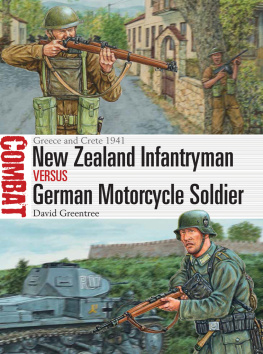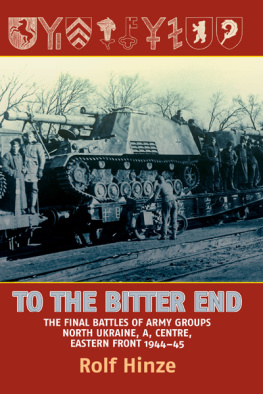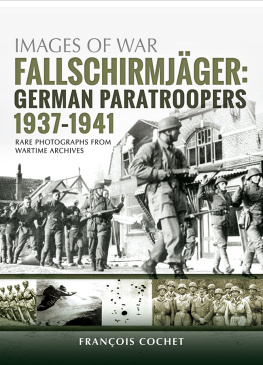Escape was on Capt Rangi Royals mind as he led his men down from the Cretan hills to the Mesopotamos Valley and the village of Armenoi. In the early hours of 28 May 1941 he was told to hold up the German advance guard with two companies from 28 (Mori) Bn in order that the main body of Allied troops could make their way across the White Mountains to the southern shore where evacuation awaited. By midday, with his positions covering the main road bypassed on both sides, he had decided to evade his pursuers across country and entered Armenoi with three men equipped with .45in Thompson submachine guns either side of him in arrowhead formation. With the Germans having airlifted Kradschtzen (motorcycle troops) to Crete, an encounter with the enemy could happen at any time.
Recently, retreat was something with which the New Zealanders were all too familiar. In April 1941, the campaign on mainland Greece was a fighting retreat from the start; a risky military adventure where all that could be done was to delay rather than stop the German advance. Maj-Gen Bernard Freyberg, GOC 2nd NZ Division, summed it up as a disaster embarked upon for political reasons (quoted in Stockings & Hancock 2013: 556). From the start Freyberg was not enthusiastic, but on 17 February 1941 was bamboozled by the C-in-C Middle East, Field Marshal Archibald Wavell, who mistakenly told him the New Zealand Government had agreed to intervention. Only on 26 February, following the official British offer of military forces to Greece, was the New Zealand Government asked; they gave their assent three hours later without asking for Freybergs advice. True, Freyberg had not made his worries clear to Peter Fraser, the New Zealand Prime Minister, who instructed him in future to report at once any disagreement as to the operational employment of the New Zealand forces in future (quoted in Stockings & Hancock 2013: 567), but by 9 March, fortified with Freybergs opinion, Fraser though he thought pulling out would destroy the moral basis of our cause was calling the campaign dangerous and speculative ( quoted in Stockings & Hancock 2013: 560). The decision to hold on to Crete was for many similarly misplaced and again threatened the annihilation of New Zealands only division.

In Egypt prior to deployment to Greece, 2nd NZ Division never completed a divisional exercise because 5 NZ Bde with the majority of the divisions equipment only arrived from Britain in March 1941, when 4 NZ Bde was already on its way to Greece. 4 NZ Bde was the first to deploy, to the Aliakmon River. The New Zealanders benefited from the railway line north from Athens and, following arrival at Piraeus harbour, were soon sent further north through the mountains. Here, in March 1941 a column of New Zealand soldiers marches through Katerini, situated on the plain north of Mount Olympus. (Alexander Turnbull Library, DA-00988-F)
In April 1939, Britain and France had guaranteed military support for Greece if it was attacked by a foreign power. When Italy invaded Greece in October 1940, Greece did not ask for help from Britain, and Britain deployed only aircraft to Greek airbases. At first, Secretary of State for War Anthony Eden did not want any troops sent there from North Africa as in December 1940 a successful British offensive was under way, but following his appointment as Foreign Secretary Eden changed his mind and wrote of seriously upsetting the German plans (quoted in Stockings & Hancock 2013: 143). By mid-January 1941, mainly at Prime Minister Winston Churchills instigation, the policy changed; the aim now was to set up a Balkan front against the Axis including Greece, Yugoslavia and Turkey. C-in-C Middle East, Field Marshal Archibald Wavell visited Athens and offered three divisions to defend Salonika. Wavell, who would always claim there was a reasonable chance of holding a potential German invasion force, did nothing to dissuade Eden and Lt-Gen Henry Maitland Jumbo Wilson, chosen to command the expedition, thought the Greek mountains would negate German armoured strength and believed in the superiority of Allied infantry.
The Greek dictator Ioannis Metaxas said three divisions would not be enough to protect Greece (he wanted nine), but would be sufficient to provoke a German invasion. Only if Germany entered Bulgaria would the offer be accepted. In late February 1941, intelligence suggested that this would occur and Wavell and Eden were in Athens for talks on 22 February with the Greek Prime Minister Alexandros Koryzis (Metaxas had died on 29 January). On 7 March they informed the British War Cabinet that if Yugoslavia stayed neutral, a position west of Salonika called the VermionOlympus Line could be defended. The first troops were sent to Greece that day; if the Germans were allowed to move through Yugoslavia, however, this position could easily be turned through the Monastir Gap.
2nd NZ Division was the first to land. Lt-Gen Wilson, chosen to command the expedition, issued orders to support the four Greek divisions on the DoiranNestos Line in Thrace, and 4 NZ Bde and 6 NZ Bde began to dig an anti-tank ditch north of the rail junction at Katerini that supplied the Greeks in Albania. Freyberg thought this forward deployment on the plain violates every principle of military strategy (quoted in Pugsley 2014: 69). 6th Australian Division then started to arrive, with 16 Aust Bde on 21 March and 19 Aust Bde on 3 April, but 17 Aust Bde was late. The British Chiefs of Staff stated they had a reasonable chance of holding [the] German attack, thereby encouraging Turks and Yugoslavia to resist (quoted in Stockings & Hancock 2013: 143). With a coup in Belgrade having overthrown the pro-Axis government on 27 March, Churchill was under the impression that the prize has increased and the risks have somewhat lessened (quoted in Stockings & Hancock 2013: 128).

2. Panzer-Division included Kradschtzen-Bataillon 2; its approach through Bulgaria in March 1941 proved tiring, with a poor road and railway network creating delays. The German invasion of Greece in April 1941 would be led by the Kradschtzen (motorcycle troops). When the advance was halted, it was their role to work forward to indicate the enemys presence for follow-on infantry and expose the position of enemy anti-tank guns before tanks were committed. Here, a sidecar passes a donkey and cart on a mountain road. (Authors Collection)
In September 1940 German troops had started to deploy to secure the oilfields at Ploesti in Romania, and Germany wanted stability in the Balkans to guarantee their security. Hitler, with the invasion of the Soviet Union on his mind, misunderstood the threat British airbases in Greece presented to the oilfields, and on 12 November 1940 issued Fhrer Directive 18 to prepare for an occupation of Greece north of the Aegean. This was delayed by bad weather and poor roads, which stopped Generalfeldmarschall Wilhelm Lists 12. Armee from entering Bulgaria until 2 March. On 17 March the steady Allied build-up led Hitler to expand his war aims to include the occupation of the Greek mainland. The Belgrade coup prompted him to include the occupation of Yugoslavia as well. 1. Panzergruppe and XXXXI. Armeekorps (mot.) were removed from 12. Armee to move on Belgrade; however, General der Kavallerie Georg Stummes XXXX. Armeekorps (mot.) comprised of 9. Panzer-Division, the SS formation

























